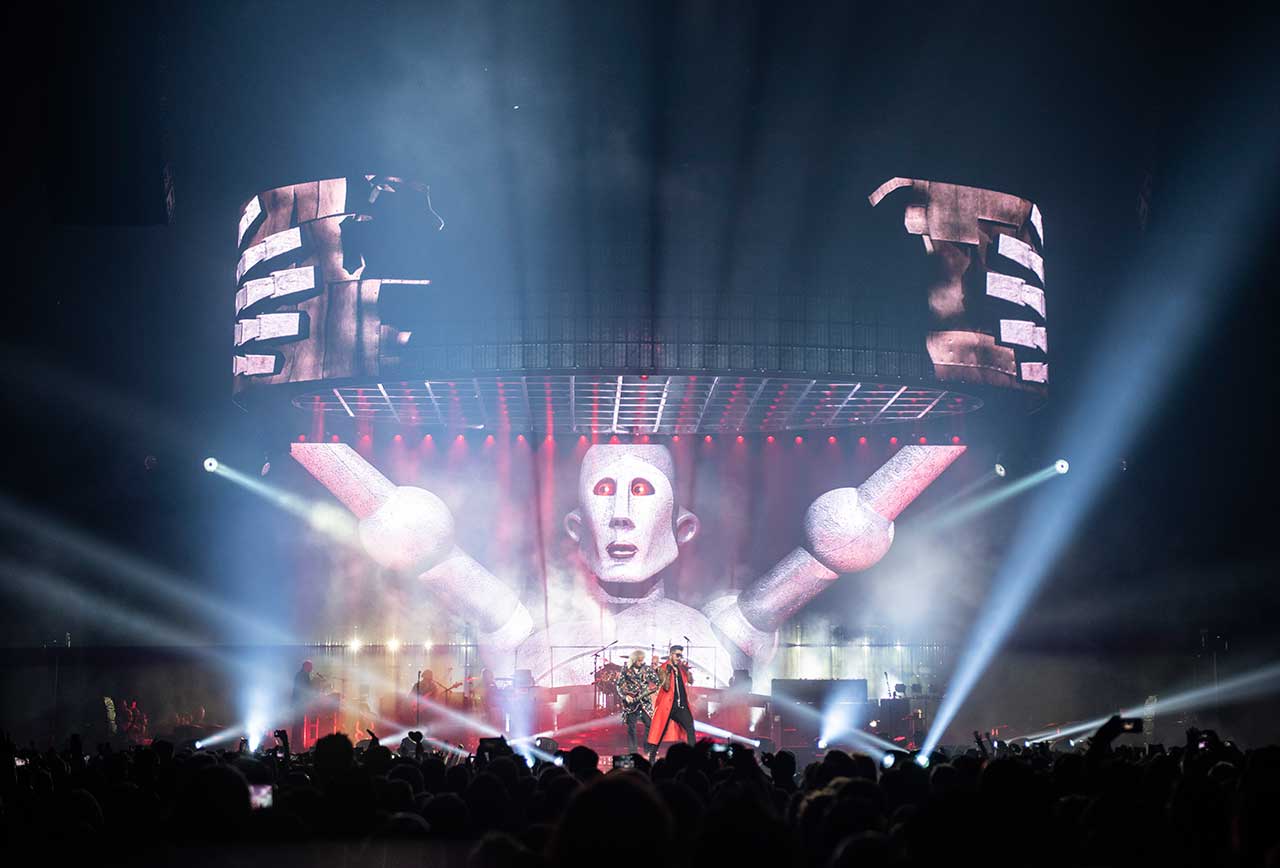They're legends. Whichever way you look at it, nobody can mess with Queen and their legacy of stadium-shaking rock anthems. Their live shows are cause for celebration, packing a bombastic two hours with everything from Seven Seas Of Rhye to We Are The Champions to Fat Bottomed Girls to Radio Ga Ga to I Want To Break Free to… well, you get the idea. But for a band now enjoying fifth decade together, how do you make the live show fresh and exciting for old school fans and young ‘uns alike?
Ahead of Queen & Adam Lambert’s show at Wembley arena in London last month, Classic Rock were given an exclusive tour of the stage by Ric Lipson, show architect for production company Stufish, who not only work with Queen but Beyonce & Jay Z, U2, The Rolling Stones and more. Not a bad CV.
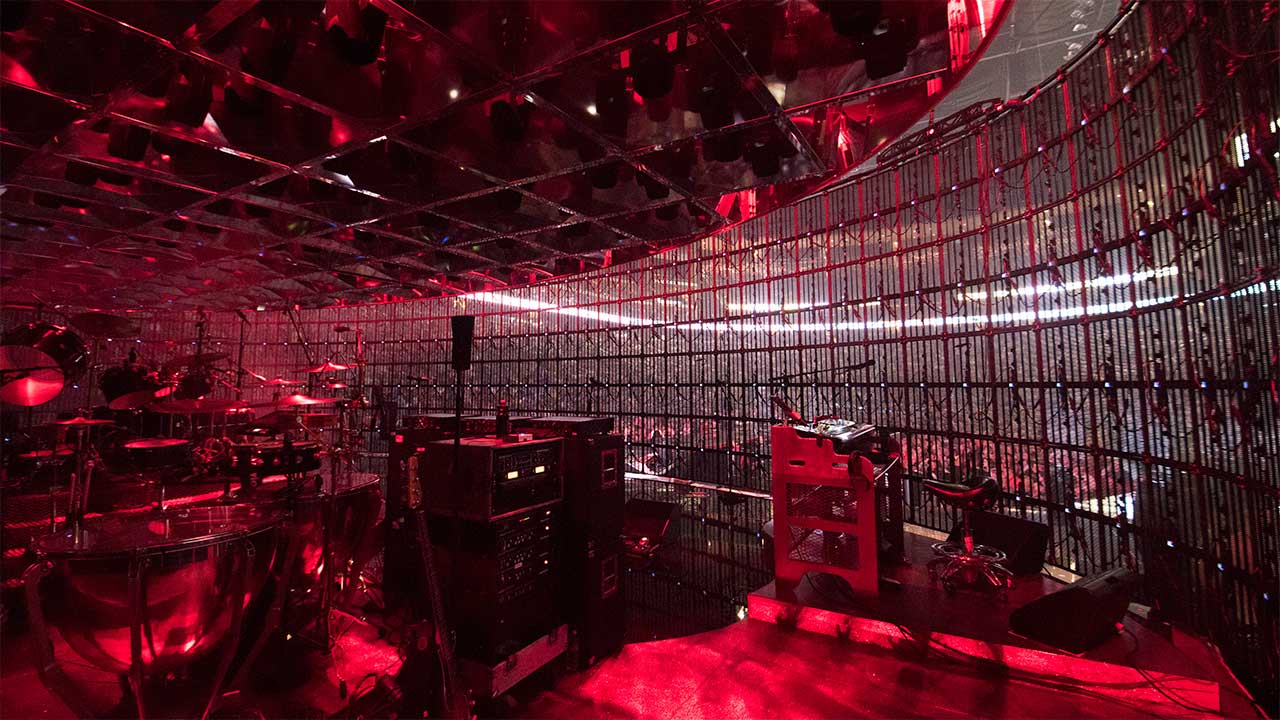
Entering stage left. We are hidden behind a giant video screen that encircles the stage. Soon, at the start of the show, it will be lifted off the ground by Frank, the affectionately-named robot from Queen’s News Of The World album cover.
But that’s just the beginning. Above us is The Halo, which Ric describes as “a massive lightbulb full of 94 lights”. It weighs a whopping eight tons, but its nine motors allow it to move up and down and rock from side to side. It's a scary thing to stand beneath, but we imagine Brian May is made of stern stuff.
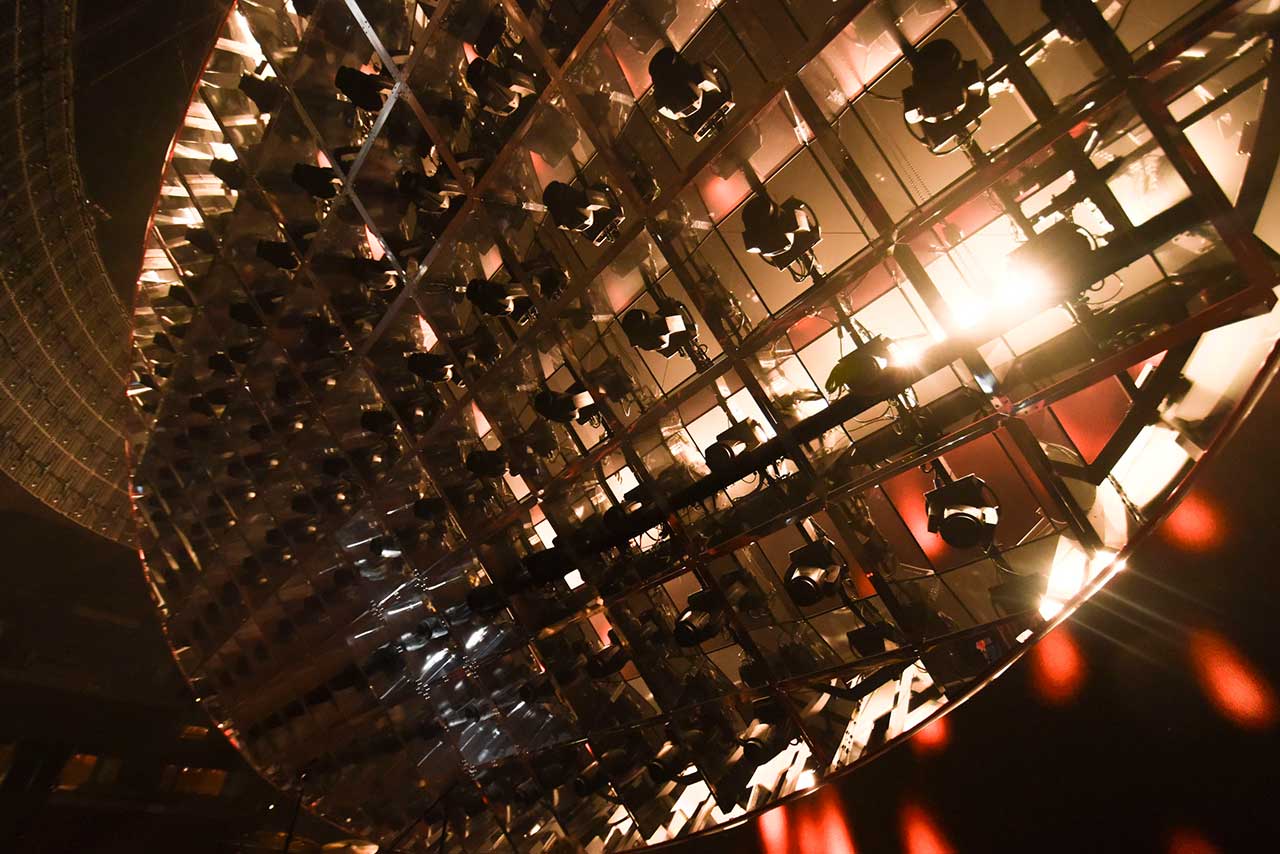
The stage itself isn’t your usual black rectangle covered in gaffer tape either. In fact, it’s in the shape of Brian May’s signature Red Special guitar – an instrument he famously made with his father from an old fireplace. The neck of the guitar bursts out into the crowd, acting as a walkway and allowing numerous props to pop up during the show – including a bicycle for singer Adam Lambert to ride around on, a drum kit for Roger Taylor to hammer away on, and Frank’s head, with fully-movable eyes on which Lambert perches.
In all, it’s a pretty full-on show. It’s much more like a night at the theatre than the same old tired rock show we’ve seen a million times. Two epic screens, a giant robot, Brian May soloing on top of a giant platform that comes out of the stage, confetti cannons, selfie sticks… it’s all in a day’s work for Stufish, who somehow managed to pull the whole thing off.
But how does such a show come together? And do you get much freedom with a band like Queen & Adam Lambert? We sat down with Ric Lipson and Stufish CEO Ray Winkler to get a deeper look at the show and more.
Everything Queen do has always been very visual. Was there any apprehension or worry that you might add something to the band’s legacy that fans might not want to see from them?
Ric: “On the one level, although Freddie Mercury was camp, he was camp in a very different way to Adam Lambert. As the band have become more comfortable with Adam over the years, so has the show; the show has become more camp – which Brian and Roger quite enjoy. The level of production we’ve given them has allowed them to do things they’ve only ever dreamed of, because the technology wasn’t there in the past, or the shows didn’t require it.
“Their iconic images and album covers we use throughout the show – they’ve got a back catalogue of graphics that we’ve brought to life for the first time in 30-40 years. They’ve really enjoyed the challenge of being relevant and fresh at this point in their lives, and they have enjoyed the subtle change. Fundamentally they still play the songs the same way, but the sounds are fresher and it just sounds amazing. They’ve really enjoyed it.
"There’s always a risk of tarnishing a certain memory and the obvious thing is Freddie, but Freddie is a huge part of the show although he’s not there. He appears through video in quite an emotional way a few times in the show.”
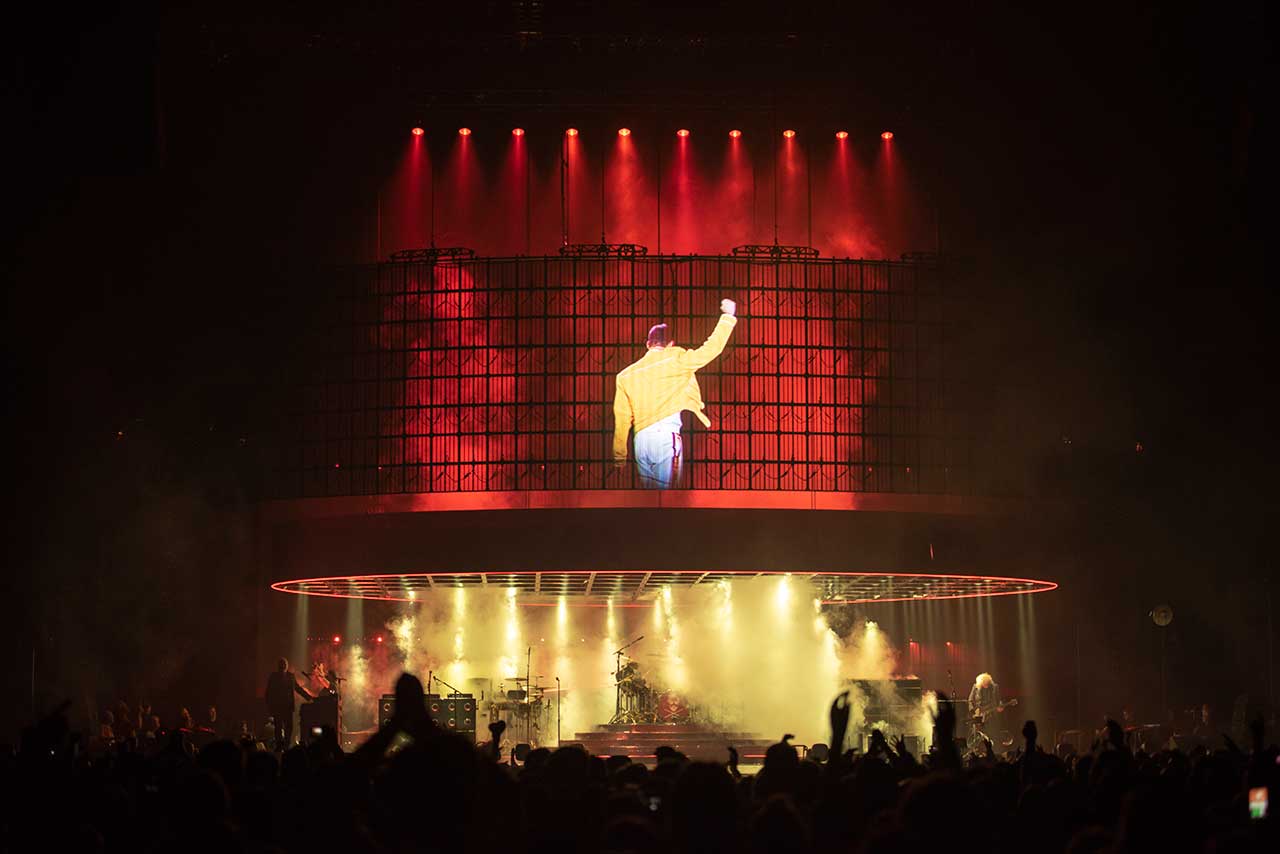
How would you feel about using a Freddie hologram?
Ric: “We’ve been trying to do a hologram with Freddie for years, but the technology’s never really been there in an arena format. We do something that’s akin to a hologram in the show; it’s not a hologram but it gives the effect that a hologram can give. We’re always thinking about how we can bring Freddie to life within the show.”
Ray: “It’s a testament to the quality of their music that after all these years they haven’t quit; they’ve managed to maintain themselves as a relevant band. Technology permitting and if it continues to work, I’m sure technology will catch up at some point where you can bring Freddie back onstage in a way that’s never been done before.”
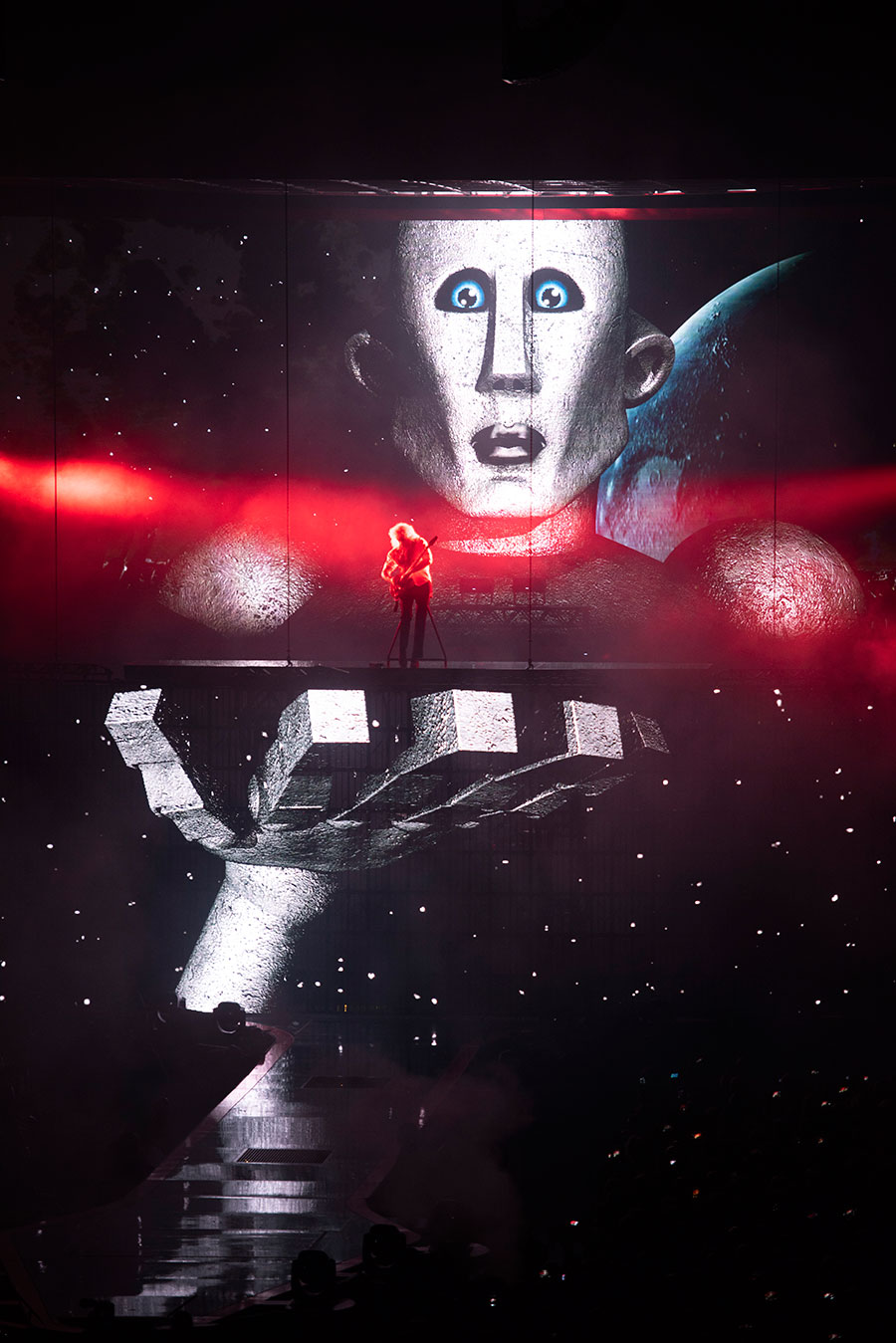
How much freedom do you get working with a band like Queen & Adam Lambert?
Ric: “Because we’ve worked with them for years, they trust that we could help them with the creative direction of the show more. Historically it has been a case of 'Here’s the set and we’ll work out songs in soundcheck,' so there didn’t need to be much prepared other than lights. But when we said this is going to be a big video-heavy spectacular show and it will take three months to make all the content, the fact it was the 40th anniversary of News Of The World meant that songs from that album had to be in the show. We thought about a very spectacular start to and how it will feature back in the show.
“That gave us three or four moments in the show where we steered the conversation to say, 'If we’re going to do a show that has all this content, we need a flow that makes sense of it all.' It needs highs and lows and of course a Brian May guitar solo, where his love of space and badgers come into the narrative. In previous shows we actually made a badger out of stars, not in this one, but we do go into space. This is the perfect moment to do the most spectacular laser show you’ve ever seen.”
“The problem with a Queen show is that there are so many hits you’re in a danger that it’s always up and every song is so good that you’re energetically flat, so you have to build a show that hits you in the face at the start, gives you a chance to breathe, then hits you in the face again. We have to sit with the band and say 'We love these five songs, but they’re all up, and although that’s great, you can’t play an encore all show.' You have to make sure the high points are even higher and the lower points are more intimate and connect with the room in a different way.”
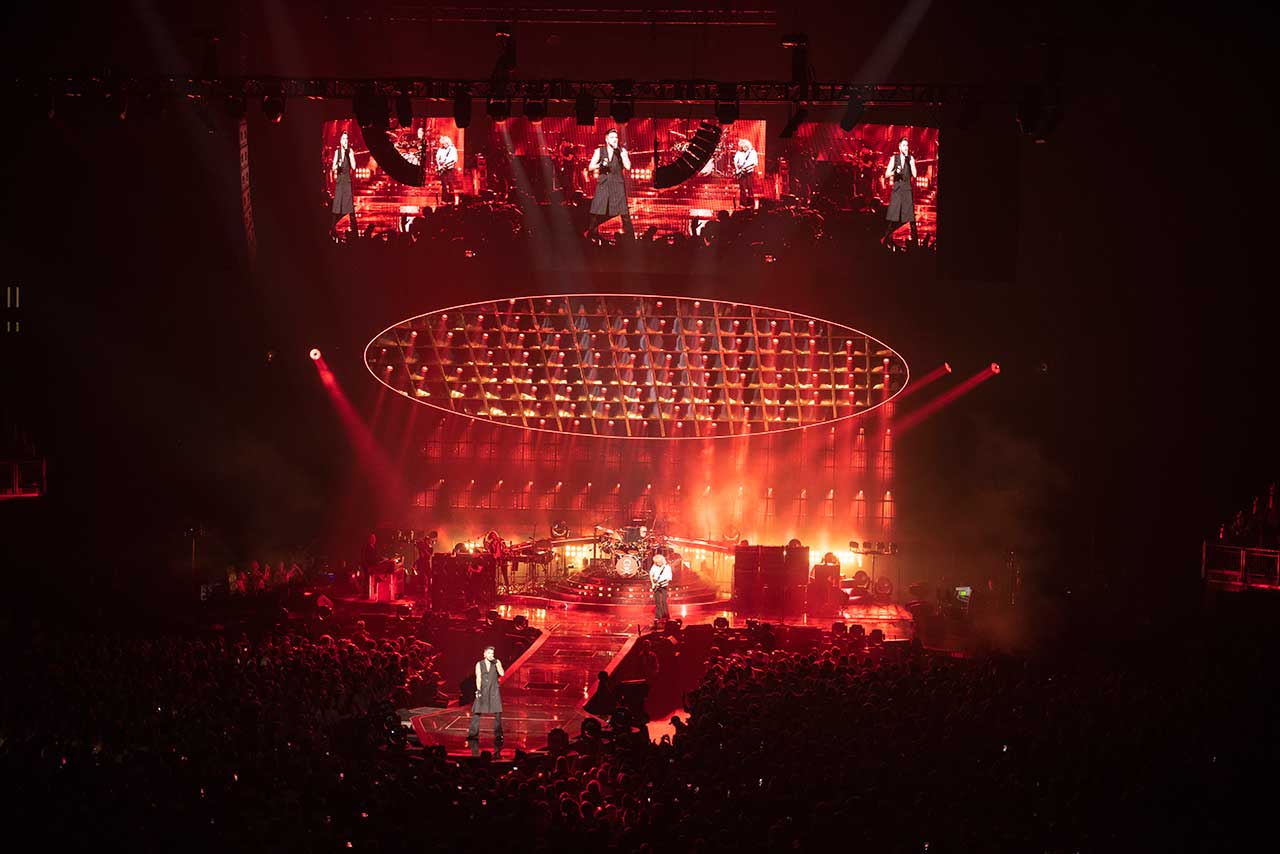
Is there anything in this Queen & Adam Lambert show that’s never been attempted before?
Ric: “In most shows nowadays you see things that have been done before, but how they’re used is different. In terms of shows generally, The Halo is a big complex piece, it’s nine motors, about eight tons of weight and 94 lights revolving around above the band. Have people done things like that? Sure. But in this context? Not so much, and it’s a big object to take around the world. I’m not sure anyone’s made a guitar-shaped stage before, especially one that looks like Brian May’s Red Special. Some shows are first in technology but this is a first in making a show like this because of the culmination of technology.”
Ray: “At Stufish we’re very conscious about using technology as a contributor to the narrative and not defining the narrative. It’s about using a mixture of elements; none of which might stand out but it’s about how you put the ingredients together and how it links to the performance is what makes this show unique.”
If we wanted to get a job designing stage production for huge rock bands, where would we start?
Ric: “Design school. Most of us studied architecture but we’re not all architects. We work on many projects concurrently at a fast pace, so if you want to do what we do, you have to love and own your work and have a passion for entertainment – whether that’s music or an art installations or whatever. We design for audiences. If you’re interested in that kind of thing, this is the kind of place to come.”

Queen & Adam Lambert are bringing this stage show to Las Vegas in September for a month-long residency. Stufish are currently working on the U2 tour that hits the UK later this year.
